Oceanography and Ecology are synthetic sciences
![]()
Review | Key Players | Significant Idea | Summary | Start
"After The War between The States, the doleful predictions of George Perkins Marsh concerning fisheries and estuarine habitats churned in the mind of his confidant and
supporter, Spencer Fullerton Baird. As a naturalist and assistant director of The Smithsonian Institution.
Baird knew that sport and commercial fisheries were dependent on anadromous fish. These fishes lived most of their existence in the sea but required the freshwater river sources to spawn The next generation of salmon, herring, or shad. Often the juveniles of these species lingered in The estuaries, where a rich supply of food, nourished the young."
John Quincy Adams , President and later Member of The House of Representatives when it created The Smithsonian Institution.
Review of Chapter Five's main points:Alexander Dallas Bache, The US Coast Survey promoted shoreline mapping.
George Perkins Marsh, scholar and diplomat, promoted geographical regenerationAlexander Agassiz, Oceanography
Spencer Fullerton Baird, US Fish Commission
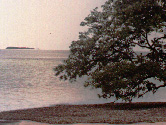
M. F. Maury, oceanography and climate
C. Hart Merriam, "life zones"
Review | Key Players | Significant Idea | Summary | Start
Fishing and hunting interests before the war influenced Post Civil War Preservation impulses.
Oyster fisherman's plight pointed up the need for federal intervention.Baird's Fish Commission (1871) drew heavily on the naturalists and the natural history tradition.
New Federal Bureaus were created like the Smithsonian Institution (1846) & Department of the Interior (1849).
Earlier precedents of federal support for professional agencies.
Lack of Congressional support for government science.Alexander Dallas Bache (1842) transformed the Coast Survey.John Quincy Adam's Internal Improvements drew opposition despite the obvious needs.
Coastal fortifications and mapping
President Jackson and the Jacksonian political backers assisted in the creation of the US Coast Survey, 1832.
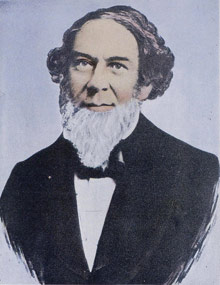
Navy Depot of Charts and Instrument 1842, and Naval Observatory.
Lt. Matthew Fontaine Maury and the US Exploring Expedition; Oceanography .
Maury, 1851, new global map of Winds and Currents.Physical Geography of the Sea, by Maury, based on Humboldt and Goethe's influences.
Military (Maury) & civilian (Bache) rivalry, notwithstanding yielded valuable natural history of the nations' and world's seashores.
Alexander Dallas Bache
Biological and geographical information about seashores, currents, tides and fisheries grew.
Specialists began to replace the naturalists (generalist) in government science.
National Academy of the Sciences, NAS, (1863) marked the ascendancy of specialists.
Charles Ellet's survey maps of the Mississippi River were used by the federal troops in the Civil War that followed
Specialists in federal sciences who studied fisheries, agriculture, geology and biology changed the way professional investigators understood the natural world.
Review | Key Players | Significant Idea | Summary | Start
habitat | niche | oceans | fisheries | oyster reefs | plant associations | birds | life zones | arid regions
Habitat science in coastal studies, Manx naturalist, Edward Forbes described littoral zones with reference to their depth.
Alexander Agassiz, in 1865, published Seaside Studies in Natural History, described coast habitats of sandy beach, rocky shore, and mud flat.Niche was defined by naturalists as routine place of residence and occupation of means of extracting a living, securing a living in the economy of nature.
The actual name for a recessed space in a wall as applied to architecture was taken from the Italian word, nichio, for the interior of a bivalve sea shell.
Father and son team of Louis and Alexander Agassiz popularized the works of Dana, Forbes and Gosse to a wider audience and developed the idea of "niche" as the place where the animal, or plant thrives.
Subsequent studies divided these areas into zones of depth, or altitude.
Forbes described zones of depth and
Gosse described Devonshire coastal marine life of the rocky shore and sand beaches .
Louis Agassiz of Harvard was an important marine and fresh water scientist of invertebrates.
His influence was felt through his students, his Museum of Comparative Anatomy & his summer school to study seaside biology.
Louis Agassiz was a curious mix of modern (Ice Age) and antiquated (anti-Darwinian) ideas.
Louis Agassiz described the coral reefs along the Southeastern Florida coasts (1850s).
Alex Agassiz described the organic realms of seaside creatures in zones, after Alexander Von Humboldt's Torrid, Temperate and Frigid zone classifications.Spencer Fullerton Baird was more of a naturalist later influenced Fish Commission & Biological Survey, hired C. Hart Merriam there at the Survey.Agassiz oceanic zones were remarkably accurate.
Substrate (shore materials, rock, sand, mud) were described as restricting certain life forms.
A. Agassiz recognized the favorable conditions of tropical Florida reefs to rich and varied fauna.
Review | Key Players | Significant Idea | Summary | Start
Line vs. trap fisherman argued over the causes for New England's coastal fishery decline 1870.US Fish Commission created to resolve such disputes by looking into the science.
Fishery conservation was the first institution to promote science based protection policies at the federal level.
Dams were destroying river fisheries as well as coastal.
Lumber and mill interests opposed fishery conservation.
Fish hatcheries were promoted along with fishery science.
Brought national attention to European Science.
Origins of the importance of and roles of the oysters in estuaries.
Bird protection emerged in Federal science bureaus.Karl Möbius' discussion of an Oyster Reef as a single entity or biocoenosis (biotically functioning assemblage) or biocenoses
"the entire . . . community would be transformed." by changes in external conditions.
Oysters are a keystone species in river mouths in that other creatures depend on these assemblages of organisms–called filter feeders, because they strain diatoms out of the water–in order to exist. Other creatures feed on the oysters, and still others like worms and barnacles grow on the oyster reef.
As indicator species oysters must have a certain water quality and hence quantity of fresh water to dilute with sea water in order to thrive.
As a sentinel species the oysters will not survive high salinity or in waters too fresh; and if too polluted the people eating oysters can get sick. When oysters die the community collapses that depend on them ecologically and commercially, so they guard the quantity and the quality, the timing and the distribution of water, nutrients, detritus and creatures dependent on these narrow conditions in river mouths.
Ernst Haeckel's contributions to nomenclature and evolution: Origin of the word oikologie, or ecology.
Both Henry David Thoreau and Ernst Haeckel are co-originators of ecology, as we now know from Thoreau's recently discovered journals.
Thoreau also argued in the 1850s for the necessity of forest reserves in every township.
C. Hart Merriam's concept of Life Zones applied to San Francisco Mountains, in the Sonoran desert, of Arizona.
San Francisco Mountains on the horizon as seen from Walnut canyon, Arizona.
As you move up a mountain it is similar, with respect to vegetation,
to moving towards the poles, from: tropical, to temperate, to frigid zones.
Each life zone is characterized by distinctive types of plants, fungus and animals.
The zones can and do blend together or inter mesh [as shown in the linked graphic drawing below] but are characterized by distinct associations of dominant plant species and their dependent animals.
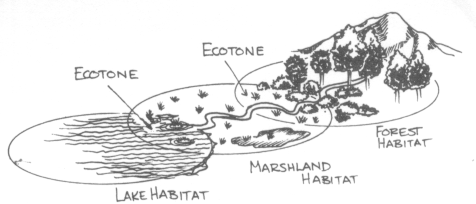
Review | Key Players | Significant Idea | Summary | Start

Bird conservation due to fashion and the millinery trades. State Audubon societies.John Wesley Powell, Comprehensive land-use plan for the arid regions was written in1891, Forest Reserve Act, protected watershed values of western timber lands.
Afognak Island, Alaska set aside as a fish, wildlife and bird refuge in 1892.
First introduced in 1897, the Lacey Act of 1900 used Interstate Commerce to stop bird hunting, halting the shipment of avian skins killed in violation state laws.
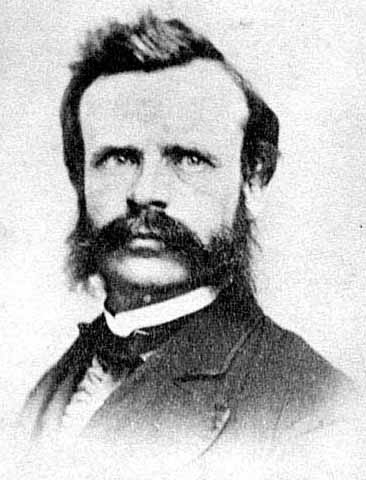 1878 describing the necessity of public ownership of water in the west because the level of rainfall on an annual basis was insufficient to sustain farming.
1878 describing the necessity of public ownership of water in the west because the level of rainfall on an annual basis was insufficient to sustain farming.
William John – W. J. – McGee, Comprehensive understanding of forests, water, rivers and conservation. Wrote a graphic description of death by thirst and dehydration.
Frederick H. Newell (1902) Bureau of Reclamation -- for arid and maritime lands.Eugenius Warming, plants classified in terms of water tolerance, xerophyte, halophyte (salt water plants) vs. hydrophyte (fresh water plants):
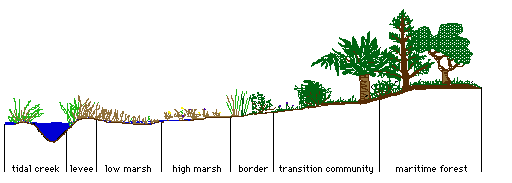
halophyte ------------ hydrophyte -------------- xerophytes (dry tolerant)
Nathaniel Shaler, scientist of the seashore wetlands.
The food web in a marsh.
Shaler's recognition of marsh's as a place of "abundant development of animal life." 107
Shaler nonetheless recommended reclamation and drainage for farms.
Charles Van Hise and economics of land and land ownership, believed in individual home ownership as a means of improving the well-being of the community.
"waste places" of marshes required drainage.Full agricultural potential demanded reclamation --to bring or remove water-- of "wasted" land.
Pelican Island, 1903, reserved in Florida (Sebastian Inlet).
McGee and Pinchot crafted Comprehensive Riverine Management.
Water conservation in the arid regions became a preoccupation of Powell's Irrigation survey in the 1880s.
Review | Key Players | Significant Idea | Summary | Start
to federal policy making is a thread and theme from 1871-1907.
River conservation was multipurpose in that it had many goals at once: flood prevention, wildlife protection, navigation restoration and reclamation as a form of conservation of land–at the expense of coastal, riparian, and inland wetlands needed by fish and birds."Somewhat ambivalently, tidal marshes had been recognized as essential habitats for fish and fowl while still being viewed as wastelands–after 1890, they were seen as a surrogate frontier of reclaimable farmland and homesteads to fulfill the popular promises of Progressive political and social ideology.""...remarkable rebuttal of laissez faire political economy."
Because if every individual pursues their own, self-interest, especially in tide lands and along river marshes and swamps–lakes or wetlands– the entire community of life, even the commercial dependence on timber, fisheries, and navigation can be so damaged as to require constant repair if not "restoration of disturbed harmonies."
George Perkins Marsh understood the river was a unit, Gifford Pinchot would come to see that, and Aldo Leopold would provide Rachel Carson with the needed coherence of conceptual thought to see how the seashore was a litmus test for the success or failure of conservation, preservation, and use in the protection of coastal regions on which the life of the sea depends.
p. 111.
Originally the pieces were there, but still in need of putting all of them together:
habitat | niche | oceans | fisheries | oyster reefs | plant associations | birds | life zones | arid regions
habitat | niche | oceans | fisheries | oyster reefs | plant associations | birds | life zones | arid regions
The New Ecology | Notes on Complete book | A New means of accounting for damages | Leopold